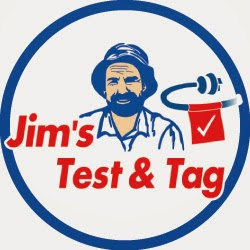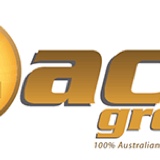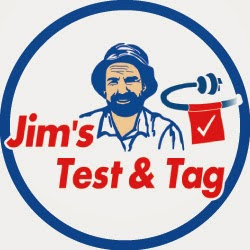Title Page
-
Client
- telent
- openreach
- Zzoomm
- I4TG
- Private Client
-
Site Address:
-
Date
-
Prepared by
-
Personnel
Assessment of Tasks
Tasks Associated
-
What tasks are associated with the work involved?
- Site set Up
- Excavation
- Jointing Chamber Excavation/Building
- Core Drill
- Excavation Near Trees
- Excavation/Working near water courses
- Working Near Railways (within 200m of level crossing)
- Traffic Calming / Management Required
- Thrustboreing of Duct
- Moleplough (Moleplough Survey to be completed)
- Reinstatement
- Use of PPE
- Use of Handtools
- Use of Machinery
-
Other
Authorisation
-
The authorisation of this site specific risk assessment is an acknowledgement of Jim's Test & Tag's commitment to all aspects of work/occupational health and safety and is authorised by:
-
This is to verify that having conducted works in accordance with the SWMS indicated above, the controls have been found to provide adequate protection and that no other safety issues have been identified. If the controls have been found to be inadequate the Divisional Franchisors are to be notified via the feedback form on the Intranet. If a high risk has been identified, the Divisional Franchisors are to be contacted immediately.
-
Additional controls required?
-
Client signature to acknowledge receipt of this site specific risk assessment
Assessment of risk
-
Are Risks are associated with the tasks involved?
-
Site set up?
-
Traffic Management Specialist required?
-
Excavation?
- Yes
- N/A
-
Jointing Chamber Excavation/Building?
-
Core Drill?
-
Excavation Near trees?
-
Working near Railways (within 200meters of level crossing)?
-
Moleplough of duct (survey to be completed seperatley)
-
Reinstatement?
-
Use of Hand Tools?
-
Use Of Machinery?
Control of Risks associated with tasks?
-
Site Set Up
- Site survey and set up:
- Upon arrival to site a powra (point of work risk assessment) will be carried out. All ops will be briefed and the powra will be signed by each operative.
- Long sleeved hi viz FR jerkins will be worn as will all other relevant PPE for the tasks, including but not limited to, FR and anti-static overall, steel toe capped boots and gloves. Barriers will be offloaded from the vehicle ad erected around the proposed work site, considering the Code of Practice for road works. A pedestrian walkway will be erected to direct pedestrians around the site of works. The are will then be scanned using a CAT 4 and Genny to establish and trace underground services, UG services will be marked on the surface using semi-permanent biodegradable paint (fades with weathering within 6 months). Prints will be utilised to identify all known services.
- N/A
-
Traffic Management Specialist required
- Yes Contact office to arrange specialist traffic management.
- No
-
Excavation
- Laying of duct:
- A trench line will have been established during trial excavation stages and any underground services will be avoided by re routing, a secondary scan of the area to establish whether any services are Evident utilising a cat and genny and service prints available. The trench line will be established with a start and end point each day for the duration of the works, the area will be barriered off using interlocking barriers, excavation will be by mechanical means, a 1.5 tonne mini digger will be used with a 150mm wide bucket (no teeth). Duct will be laid in 6m lengths and a rope will be fed through to allow cabling activity.
- Slewing:
- Lines and levels will be established with the site development prior to any excavation. Pilot Trial excavations will be carried out to establish existing depths. If additional excavation is required, the area will be scanned and underground services will be marked up, the length of the excavation will be cut using mechanical floor saw and the surface will be broken out, the excavation will be carried out using a 1.5t mini excavator above the existing plant requiring slew, the trench to the side of the existing service will then be excavated to allow the service to be lowered to the desired depth. Any broken cracked or damaged earthenware duct will be removed and replaced with plastic repair duct to fit the relevant size of earthen ware. The trench will then be backfilled and compacted using a trench Rammer to the sepc required i.e Carriageway or footway.
- Blockages:
- The lead joint chamber will be barriered and tested for gas prior to work starting, once a negative gas reading has been recorded, the gang will insert rods into the duct in question from inside the joint chamber, the rods are 3 meters in length and will be inserted until they stop at the blockage site. Once the block is located the rods will be removed and laid out on the surface to give an approximate location, the gang will then erect barriers and scan the area for underground services prior to excavating, once services have been identified the ground will be broken as the team dig down to the blocked duct and expose the cause.
- Hand Excavation Only
- Trial Excavation-Slip Trench,
- The area will be scanned and marked to identify underground services, existing scarring will also be referred to and prints utilised to identify any services under ground, the area will be cut and excavation will be by hand to a suitable depth to lay duct. One services are identified a suitable route will be chosen and works will commence for the next activity.
- N/A
-
Jointing Chamber Excavation/Building/Installation
- Modular Type Joint Box:
- Following cat and genny survey, excavation will commence by hand to sizes 600mm wide 1200mm length, 900mm deep, above the existing service duct. Once excavation is completed a type 1 sub base floor will be levelled in the bottom of the excavation, and the modular sections will be inserted by hand upto ground level, the section adjacent to the duct will be drilled to allow entry of existing duct, once fitted the frame will be set and the duct entry will be sealed around the circumference to stop ingress of debris.
- Demolish Joint Chambers:
- The joint chamber will be guarded off and a gas test will be taken, upon negative result, the cover will be removed, the area around the joint chamber will be scanned for UG services and marked up. The surface will be broken and trial excavation will be taken at each end of the chamber to identify any services which may be encased into the box walls. Upon verification that it is safe to break out the walls an hydraulic breaker will be used to demolish the chamber, all debris will be removed and the excavation will either be extended in order to rebuild the chamber or sleeved through to protect existing cables and the hole will be backfilled.
- Reset Renew frame and cover:
- The area to be worked will be guarded to current COP, the chamber will be opened and a gas test taken, upon a negative gas test the cover will be removed completely, hand tools will be used to remove the existing frame, which is bedded onto the chamber, a mortar bedding will be mixed in a wheel barrow and laid around top of chamber to set new or existing frame, the internal side will be pointed. Any debris inside the chamber will be removed and the new or existing cover will be placed into the frame, a 100mm concrete fillet will be placed around the cover and the area will be cleared of any tools and debris. Barriers will be left in place until the concrete has cured at which point we will return to site to remove all guarding.
- Excavation and building concrete joint chambers:
- Following trial excavations, we will excavate by mechanical means typically to a depth of 700mm and 600mm wide, and 1200mm long. A semi dry concrete mix will be placed as a base for the chambers.150mm x 45mm timber shutters will be placed ontop of the concrete to form the size and shape of the shutter, concrete will be placed around the shutters and second layer of shutter placed concrete placed and so on until 65mm from ground level is achieved. The concrete will be left to cure for 2 days, after which the shutter will be removed by hand and a frame set on a sand cement mix ready for the cover to be placed. The following day any reinstatements will be made good. All debris will be stockpiled or removed from site each evening
- N/A
-
Core Drilling
- Core Drilling:
- The leading chamber will require a core drill entry, to establish this we will carryout a gas test of the chamber, to do this we will open the chamber and insert a 4 head gas detector into the chamber, upon establishing a zero reading for all gases, the cover will be completely removed, the surface will be cut using a stihl saw and the end of the chamber will be excavated against to a depth of 450mm, a small pilot will be excavated at the side of the chamber adjacent to the chambers “end” wall to establish encased services. Once we are satisfied that there are no services encased in the chamber wall we will commence the core drill activity, using a HYcon hydraulic core drill attached to the mini excavator. Water will be used to ease the drill and keep the drill cool whilst drilling, once completed the core will be removed from site with the accumulated spoil and rubble.
- Drilling a modular type joint box:
- The chamber will be tested for gases prior to removal of the cover. Once a negative reading is established the are toward the eng of the chamber will be excavated to a depth of 400mm and wide enough to sit the number of ducts required, a battery drill with a 104mm hole cutter will be used to drill the chamber from both side. Once drilled the duct will be inserted and the edge around the duct will be sealed with a silicon or acrylic sealant to avoid debris from falling into the chamber
- N/A
-
Excavation near trees
- Follow NJUG Guidlines
- Red: PROHIBITED ZONE – 1m from trunk. Excavations of any kind must not be undertaken within this zone unless full consultation with Local Authority Tree Officer is undertaken. Materials, plant and spoil must not be stored within this zone.
- Amber: PRECAUTIONARY ZONE – 4 x tree circumference. Where excavations must be undertaken within this zone the use of mechanical excavation plant should be prohibited. Precautions should be undertaken to protect any exposed roots. Materials, plant and spoil should not be stored within this zone.
- Green: PERMITTED ZONE – outside of precautionary zone. Excavation works may be undertaken within this zone however caution must be applied and the use of mechanical plant limited. Any exposed roots should be protected.
- N/A
-
Working Near Railways.
- Work will become a hot job and the Hot Job Process must be followed.
- N/A
-
Use of Hand tools
- The Operative should be competent in the use of any hand tool offered for use. Training should and will be given to any operative requiring training.
-
Use Of Machinery
- Machinery will be operated by Competent certificated users.
- Machinery will be checked daily and throuout the day and any defects logged and rectified.
- No Fuel fill uops will be carreid out on site.
- N/A
-
Reinstatement
- Reinstatement:
- Edges of the excavation will be cut square and brush clear of debris, a bitumen emulsion sealant will be used to paste the edges of the excavation, this will act as a bond for the tarmac, the tarmac will be brought onto site hot and placed by operatives wearing correct ppe for the task, the tar will be levelled and a vibrating plate will be used to compact the tarmac, once compacted an edge sealing strip will be placed around the scar using a gas torch.
- The site will be cleared of any debris and signing guarding equipment then we will inspect for quality.
- N/A
POWRA
-
A point of work risk assessment will be carried out daily or at each phase of work
other information
-
see attached other documentation











